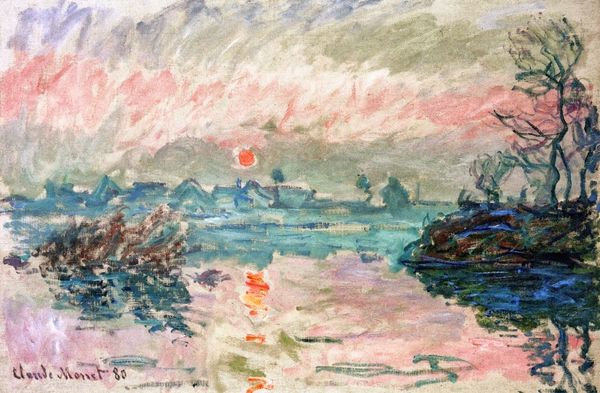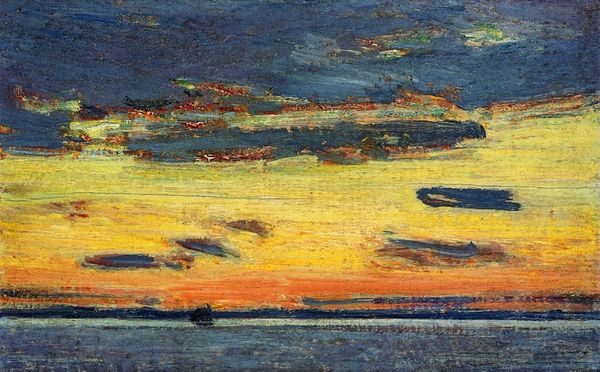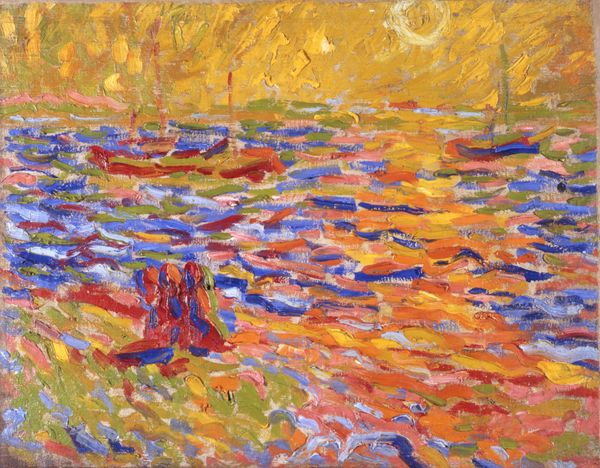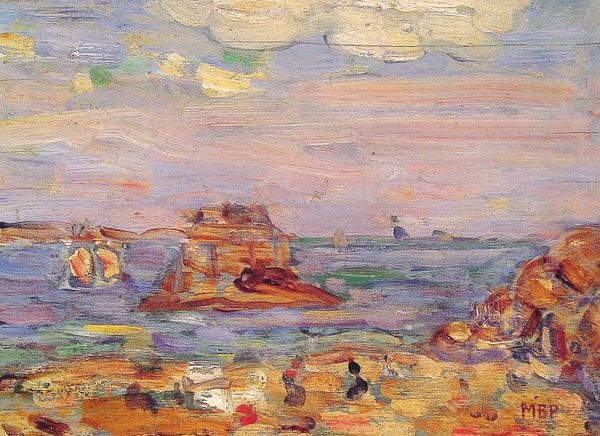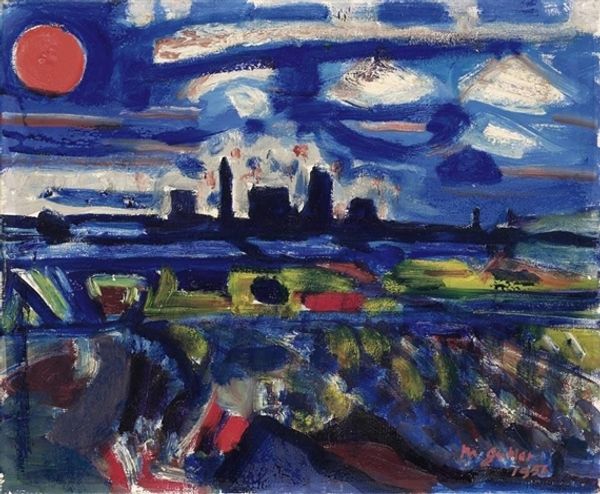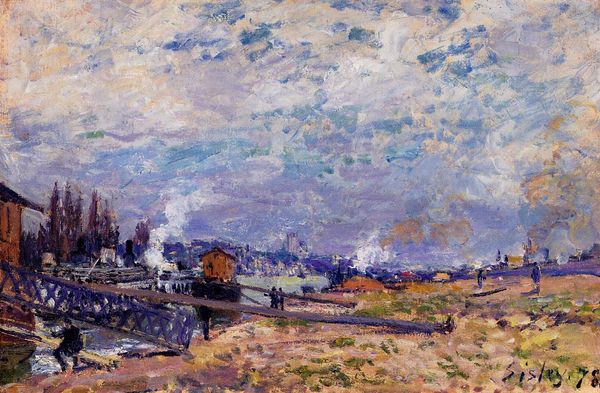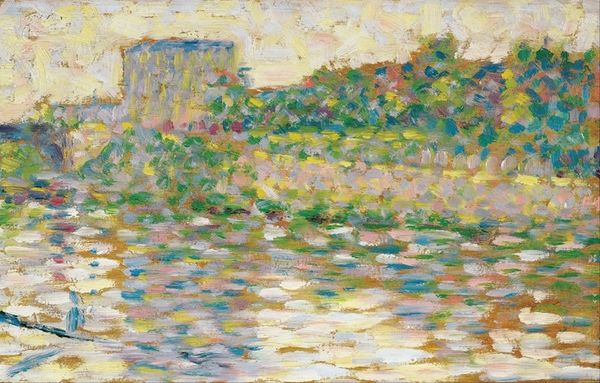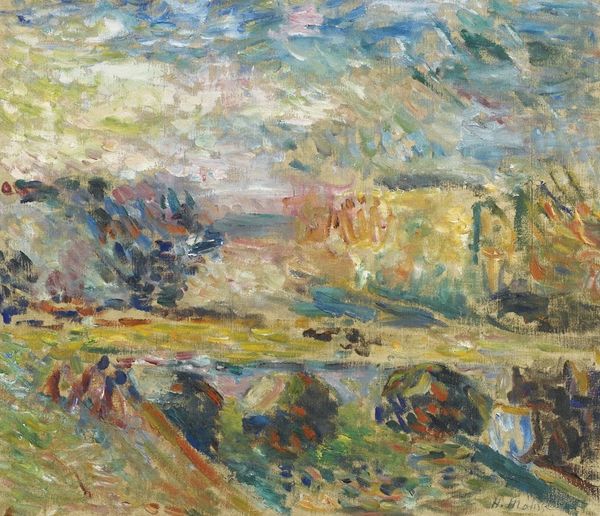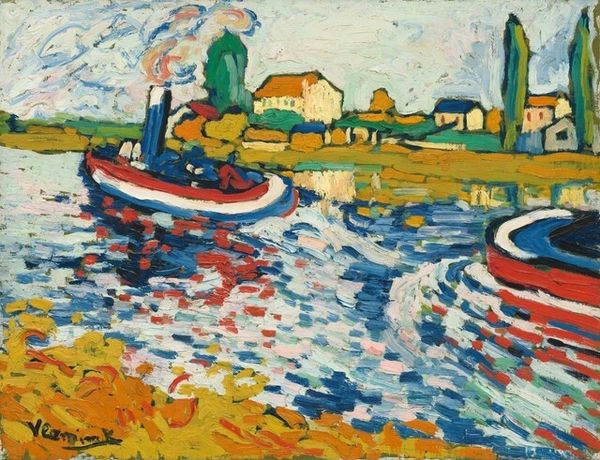
Copyright: Public domain US
Editor: Here we have Henri Matisse's "Canal du Midi" from 1899, oil on canvas. It feels like a fleeting glimpse, captured en plein air. The reflections in the water are mesmerizing. How would you interpret this piece, considering the context of its creation? Curator: Well, considering Matisse's later Fauvist explosion, this work provides a fascinating glimpse into his earlier experimentation. We need to think about what "plein air" meant in the late 19th century. It wasn't just about painting outdoors; it was about engaging with the social landscape. How does the canal function here, not just as scenery, but as a space of leisure and perhaps even commerce? Editor: That’s an interesting point. I was focused on the loose brushstrokes, the way the colors blend. Curator: Exactly, but what were the Salon painters doing at the time? Academic art prized detail and finish, reflecting established power structures. Here, Matisse offers a deliberate challenge to those norms, and also references movements such as Impressionism and Post-Impressionism, but how does he break away? Editor: So, it's less about the literal depiction of the canal and more about using it as a vehicle to challenge artistic conventions. Are you suggesting that by painting in this style, Matisse is also making a statement about who gets to represent the world and how? Curator: Precisely! By embracing this expressive style, Matisse asserts his own artistic vision and challenges the established hierarchy of taste. It's not just about capturing a pretty scene; it's a subtle act of artistic rebellion. Editor: I hadn't considered the painting in such a sociopolitical light. Curator: That is what is important when considering historical paintings and painters, thinking beyond the aesthetics and delving into the cultural relevance that shaped the works that we know today. Editor: Thinking about it this way gives me a new appreciation for the work. Curator: Indeed, understanding the historical and social context adds depth and meaning to our experience of art.
Comments
No comments
Be the first to comment and join the conversation on the ultimate creative platform.
